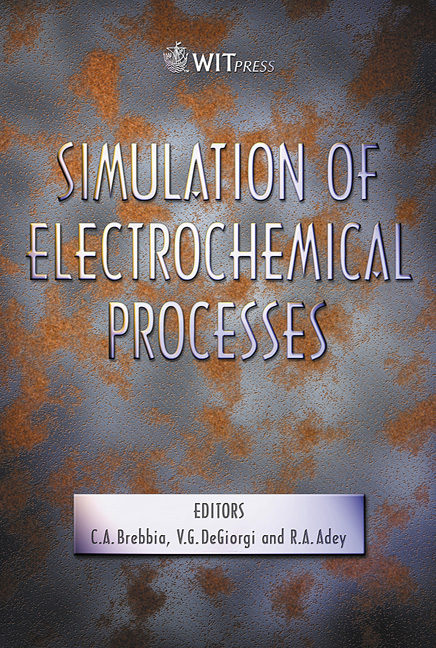Modelling The Localized Corrosion Effects Experienced By Zinc–4.5wt.% Aluminium Steel Coatings In 5% NaCl Solution
Price
Free (open access)
Transaction
Volume
48
Pages
10
Published
2005
Size
747 kb
Paper DOI
10.2495/ECOR050101
Copyright
WIT Press
Author(s)
N. C. Barnard, S. G. R. Brown & H. N. McMurray
Abstract
An attempt is made to quantitatively represent the localized corrosion effects experienced by zinc and zinc-aluminium coatings in contact with aqueous chloride electrolytes. The model is intended to operate at the micro-mesoscopic scale to include features of metallurgical interest associated with these coating alloys. Using the finite difference method, field based simulations estimate the location and intensity of localized phenomena brought about by predicted dissolution events occurring at the surface of an alloy coating. Perturbations in the ion concentration are evaluated by the model to determine potential and current flux in solution. Differing coating thicknesses are considered in addition to differing microstructures resulting from production conditions. From these, normalized current density fields predicted in the electrolyte present are evaluated. Keywords: localized corrosion, modelling, zinc aluminium steel coatings, finite difference, microstructure. 1 Introduction There has always been an interest in protecting steel, one of the most prominent engineering materials in the construction industry against the detrimental effects of corrosion. Corrosion effects can be seen to alter material properties, and with the associated economic impact of corrosion, it is often desirable to limit the opportunity and influence of this physicochemical process on the world’s durable goods and infrastructure. Metallic coatings are used in the protection of
Keywords
localized corrosion, modelling, zinc aluminium steel coatings, finite difference, microstructure.





